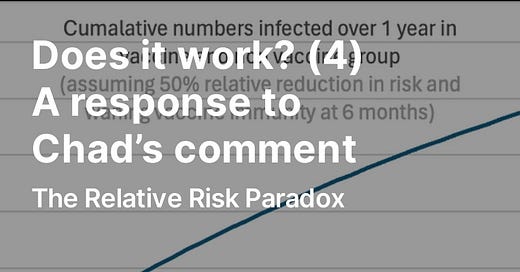Chad’s comment to the “Does it Work 2” post asked, 'Is it correct to say that relative risk is more useful where you expect close to 100% of a population to be exposed to a pathogen?' We set out how to think about this issue. If you bear with us and follow our estimates, you'll end up with a different viewpoint about relative effects in the context of respiratory agents.
In answering this question, we have made several assumptions and simplifications to facilitate understanding.
First, we assumed that 2% of people would be infected each week. Cognitive errors might intuitively say that by week 50, 100% of people will be infected. However, this isn’t the case, as we have to factor in natural immunity, which leads to a decreasing pool of susceptible people. We have assumed it lasts for a year once infected.
Then, each week, fewer susceptible people are infected as the pool of potential targets progressively shrinks. This means that by the end of the year, 64 out of 100 would be infected…
Keep reading with a 7-day free trial
Subscribe to Trust the Evidence to keep reading this post and get 7 days of free access to the full post archives.





